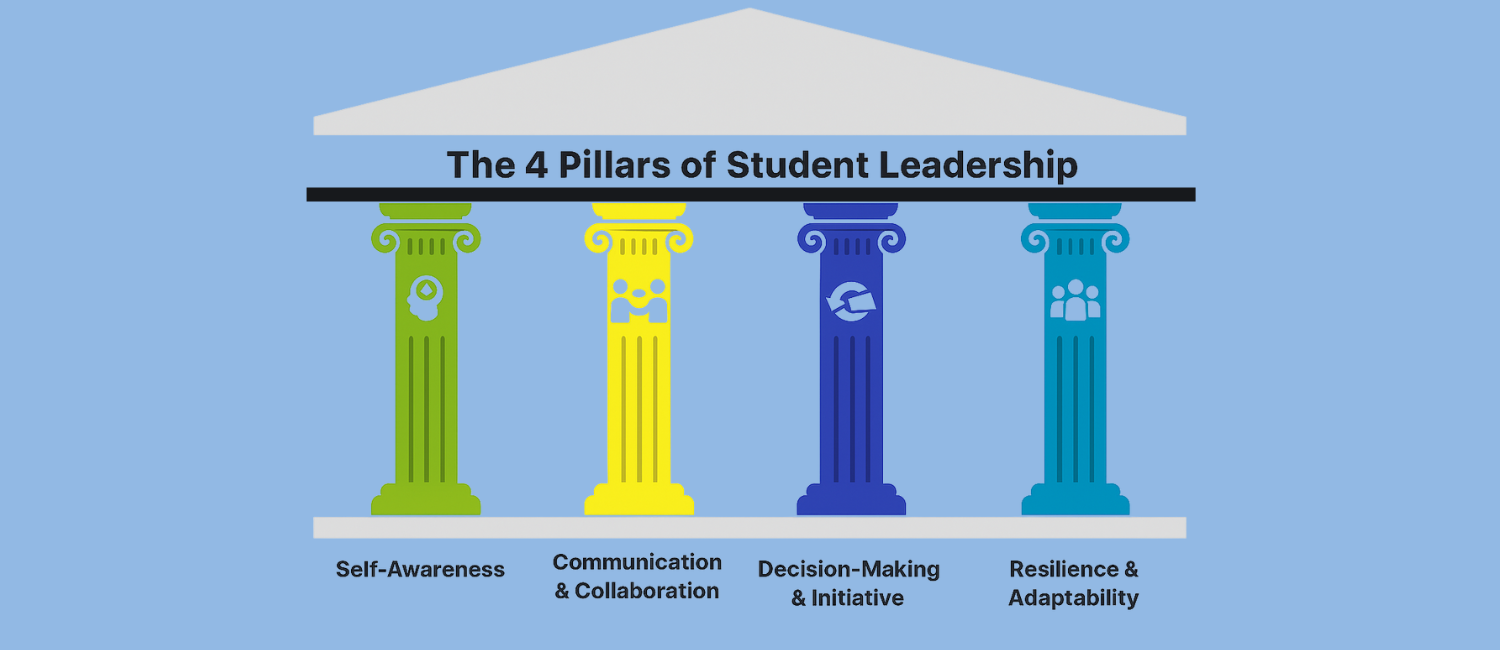By Preethi Durga, Career Strategist & Mentor
Introduction: Addressing a Common Career Challenge
My child scores well, but freezes when life throws a curveball. Will they survive outside structured classrooms?”
That’s one of the most honest fears I hear from parents. And I understand it completely. Because in today’s unpredictable world, the real challenge isn’t just about clearing exams—it’s about navigating the unexpected with confidence.
Here’s something most people don’t realize:
The teenage brain is at its peak for wiring leadership traits like resilience, initiative, and decision-making.
Why? Because the prefrontal cortex—the part of the brain responsible for planning, self-control, and adaptability—is still under construction till their mid-20s. That means the habits, attitudes, and thinking styles you help them build today… become their automatic responses tomorrow.
So the biggest risk we face isn’t low marks.
It’s raising bright children who panic at the first setback.
Who hesitate to speak up, struggle with failure, or wait to be told what to do.
And that’s where leadership comes in—not as a title, but as a mindset.
Whether your child becomes an engineer, designer, entrepreneur, or researcher, the importance of leadership shows up in every project they handle, every challenge they face, every team they guide.
So the real question isn’t if leadership matters.
It’s this:
How early can we begin nurturing it—gently, consciously, and consistently—at home, in school, and beyond?
That’s exactly what we’ll explore in this blog—
→ Why leadership skills matter more than ever,
→ How students can start building them early,
→ Real-life examples of young leaders,
→ And actionable steps for parents and students to nurture these skills together.
Because building future-ready children isn’t about perfection—
It’s about preparing them to lead, adapt, and thrive.
Tools & Frameworks for Better Decision-Making
To understand the importance of leadership for students, we must first break it down into practical components. Here’s a framework I often use during our career counselling sessions:

The 4 Pillars of Student Leadership
To understand the importance of leadership for students, we must first break it down into practical, teachable components. This isn’t just about holding a title like “head boy” or “club president.” It’s about the small, consistent habits that build the mindset of a future-ready leader.
Here’s a framework I often use during our career counselling sessions, especially with students who feel unsure or “not leadership material.”
1. Self-Awareness
Before you can lead others, you must understand yourself. Self-awareness is the bedrock of authentic leadership. It means knowing your strengths, values, passions, and even emotional triggers.
As I often tell my students, “If you don’t know who you are, how will you know what kind of leader you want to be?”
Without self-awareness, even the brightest student can climb a ladder that’s leaning against the wrong wall—chasing a career that never fits who they are.
What most parents don’t realize is that self-awareness is also the foundation of self-regulation. Neuroscience shows us that the more aware a teen is of their thoughts and reactions, the more they can manage stress, avoid impulsive decisions, and stay aligned with long-term goals.
Useful Tool:
Personality assessments like MBTI or StrengthsFinder are powerful starting points. They help students identify their natural leadership style—whether they lead through empathy, strategy, creativity, or organization.
2. Communication & Collaboration
Great leaders aren’t just great speakers—they’re also great listeners and bridge-builders. These skills are shaped every day: in school projects, clubs, sports teams, and even family dynamics.
Many parents think leadership is only for outspoken, extroverted kids.
But some of the strongest leaders start as quiet observers—students who lead through empathy, reflection, and thoughtful communication.
Think of a student who becomes the calm anchor during a heated class debate—listening deeply, summarizing opposing points, and helping the group reach consensus.
That’s leadership too.
Useful Tool:
Encourage participation in Toastmasters for Teens, Model UN, or peer mentoring programs—spaces where students can develop their leadership presence in structured, supportive ways.
3. Decision-Making & Initiative
Leadership isn’t about waiting for instructions—it’s about stepping up, making decisions, and learning from outcomes. From starting a recycling campaign at school to planning a family trip, these moments build the muscles of initiative.
What’s important here is giving students safe-to-fail environments—controlled spaces where they can try things without fearing huge consequences.
Whether it’s organizing a school fundraiser or solving a peer issue, these are real-world rehearsals for adult leadership. They teach kids to analyze risks, take ownership, and handle both praise and feedback with grace.
Useful Tool:
Enroll them in entrepreneurial bootcamps, case study competitions, or business simulations. These formats offer hands-on experience in problem-solving, strategic thinking, and stepping out of the comfort zone.
4. Resilience & Adaptability
Every leader—no matter how smart or successful—faces setbacks. What sets them apart is how they respond. Resilience helps students bounce back from academic stress, rejection, or failure without losing their self-worth.
Adaptability, on the other hand, teaches them to pivot. To stay curious and flexible when plans change or outcomes disappoint.
Here’s a truth many families overlook:
In a future where the average Gen Z professional might change careers (not just jobs!) 5–7 times, resilience and adaptability aren’t just nice-to-have—they’re survival skills.
Useful Tool: Mindfulness practices, journaling, and habit tracking apps help students build emotional regulation and reflection—core ingredients for mental strength.
Parent Insight:
Most parents (understandably) focus on marks and achievements.
But over the years, I’ve seen that it’s these small, invisible leadership micro-skills that actually predict long-term success, career growth, and personal fulfilment.
The earlier we start nurturing them, the better equipped our children will be—not just for school, but for life.
Insight: Students with leadership exposure perform better in interviews, scholarship applications, and team settings—because they know how to think, not just what to think.
Real Stories, Real Shifts: How Leadership Took Root in Two Unlikely Places
Let me share two real stories from students I’ve worked with—neither of whom saw themselves as “leaders” in the beginning. And yet, what unfolded was nothing short of transformational.
Case 1: Gowri – The Silent Performer Who Found Her Voice
When Gowri first came to us, she was the kind of student most teachers love—diligent, thoughtful, and consistently top of her class. But the moment she entered a team setting, everything changed. She froze up during group discussions and rarely voiced her ideas. Her parents weren’t worried about her grades—they were worried about her confidence.
Her challenge wasn’t capability—it was self-doubt. Gowri believed that if her ideas weren’t bold or loud, they weren’t valuable. And in an environment full of assertive classmates, she retreated.
What We Did:
- Reflective Journaling: We began with quiet reflection. Journaling helped Gowri recognize her emotional triggers and unpack her hesitations without judgment.
- Peer Leadership Labs: She was gently encouraged to co-lead low-pressure spaces—study circles, volunteer activities—where leadership could grow without performance anxiety.
- 1:1 Simulation Coaching: Using role-play and mock meetings, Gowri practiced sharing her opinions in safe, supportive settings.
The Inner Shift:
These small steps weren’t just about speaking up — they rewired Gowri’s self-belief circuits, taught her to process hesitation, and gave her safe spaces to lead. This is the unseen side of leadership growth most parents overlook.
By 12th grade, she was part of her school’s social impact club. Two years later, she was leading her college debate society and representing her university in national policy summits.
Today, she’s studying Public Policy at a global university and is mentored by diplomats and changemakers.
Myth-Busting Insight:
Leadership didn’t begin for Gowri on a podium. It began in her quiet journal—learning to trust her own ideas.
Case 2: Devendar – From Gamer to Strategic Leader
When I first met Devendar, his parents were at their wits’ end. “He’s bright, but all he does is game,” they said. Devendar had lightning-fast reflexes, sharp analytical thinking—but none of it was visible at school.
The real issue wasn’t gaming. It was disengagement. He couldn’t see the point of traditional academics or formal leadership roles—they felt irrelevant.
What We Did:
- Mapped His Passion: Instead of forcing him to give up gaming, we channeled it. Devendar was encouraged to organize an inter-school eSports tournament.
- Leadership in Action: He had to form a team, plan budgets, pitch sponsors, handle logistics, and run live streaming. It wasn’t just a game—it was leadership training in disguise.
- Skill Reflection Coaching: After every milestone, we helped him name what he’d gained—planning, delegation, emotional regulation, crisis handling.
The Inner Shift:
Pitching sponsors, managing a budget, handling 300 participants — Devendar was building real-world decision-making, accountability, and people management long before he ever carried a formal title.
The event flipped a switch in him. Teachers saw him differently. More importantly, he saw himself differently.
Today, Devendar runs a digital wellness start-up for teens—helping them find balance between tech and mental health.
Myth-Busting Insight:
Most see gaming as wasted time. For Devendar, it became a playground to practice strategy, resource planning, and leading under pressure.
What Might Leadership Look Like in Your Child?
You might see a similar spark in your child—maybe in how they quietly resolve peer conflicts, their obsession with planning family outings, or how they lead behind-the-scenes on school projects.
Leadership has many doorways. It’s not always loud or official. The key is to notice it early—and gently stretch it.
Take a moment:
Where might leadership already be peeking through in your child’s daily life? In their hobbies? Their questions? Their quiet observations?
Sometimes, it’s right there—just waiting to be noticed.

Actionable Steps for Parents & Students: Turning Everyday Moments Into Leadership Practice
Now that we understand how deeply the importance of leadership shapes a student’s long-term success—let’s get practical.
I often hear questions like:
“Where do we even begin?”
“What if my child is shy, unsure, or not ‘leadership material’?”
“As a parent, how can I encourage leadership without pushing too hard?”
These concerns are completely valid.
Here’s the truth: leadership isn’t something your child can suddenly “switch on” for a college interview or job role. It’s grown steadily—through small wins, safe spaces, and a lot of quiet trial and error.
This section walks you through low-pressure, high-impact ways both students and parents can build a leadership-friendly environment at home and at school—whether your child is an enthusiastic extrovert or a thoughtful introvert still finding their voice.
For Students: Building Leadership in Everyday Life
Take on Responsibility — Organize a club, volunteer, or lead a classroom project
Why this builds leadership:
Whether you’re coordinating a community drive or leading a school event, you’re learning how to take ownership. You’re not just “doing something”—you’re deciding, managing, and delivering. That’s the foundation of leadership.
Build Public Speaking Skills — Start with 1-minute talks at family dinners
Why this builds leadership:
It’s less about being polished and more about thinking on your feet in low-stakes environments. These mini talks train your brain to organize thoughts, handle mild performance pressure, and express clearly—skills every leader needs.
Learn Decision-Making — Try planning a family outing or weekend activity
Why this builds leadership:
From budgeting to choosing venues to negotiating with cousins—these everyday choices mimic real-world planning. You’ll build critical thinking, delegation, and confidence in decision ownership.
Reflect on Feedback — Ask: What worked? What didn’t? What will I do better next time?
Why this builds leadership:
Leadership isn’t about getting it perfect—it’s about learning faster. This simple habit builds self-awareness, growth mindset, and resilience—so you bounce back stronger after mistakes.
For Parents: Creating a Home That Grows Leaders
Encourage Opinions at the Dinner Table (Yes, Even Disagreements!)
Why this builds leadership:
Many parents hesitate here, fearing arguments. But expressing opinions—even dissent—teaches students to think critically, listen actively, and adjust their views. Safer to learn this at home than at their first workplace debate.
Leadership insight: Leaders aren’t just good talkers—they’re thoughtful responders.
Expose Them to Biographies, TED Talks & Podcasts on Leadership
Why this builds leadership:
The goal isn’t to idolize CEOs—it’s to show kids that leadership comes in many forms. Some lead with empathy, others with strategy or vision. This expands their mental model of what leadership can look like.
Myth-buster: Not every leader looks like Elon Musk or speaks like Obama—help your child see that they can lead in their own style.
Don’t Just Praise Grades — Celebrate Problem-Solving, Empathy, and Initiative
Why this builds leadership:
By shifting focus from marks to mindset, you help your child feel seen for their deeper strengths—persistence, creativity, kindness. These are the traits that shape impactful future leaders, not just high-scoring ones.
Career insight: In tomorrow’s workplace, emotional intelligence and initiative often outrank test scores.
Involve Them in Real-Life Decisions — Vacation Planning, Budgeting, Community Work
Why this builds leadership:
Real-world problems offer real-world learning. When kids help plan a trip or co-manage a family event, they’re building negotiation, planning, and teamwork muscles—all transferable leadership skills.
Future-proofing tip: In a world where careers and industries will constantly evolve, leadership gives your child the compass to navigate change.
One Small Step at a Time
You don’t need to transform your home overnight.
Just choose one small practice to begin with—maybe it’s letting your child lead dinner table conversations, or co-planning a weekend activity.
Because leadership doesn’t begin in titles or awards.
It begins in the tiny, repeated moments—of voice, of choice, of courage.
Remember: Leadership grows quietly, through everyday choices, repeated often.
Conclusion: Leadership Is the Skill That Builds Every Other Skill
Because at the end of the day, leadership isn’t just a “nice-to-have” — it’s a set of neural pathways your child is wiring right now. Every time they speak up, make a decision, bounce back from a setback, or support a peer, they’re literally shaping the circuits for confidence, empathy, adaptability, and influence.
The earlier they build these internal muscles, the stronger and more natural these responses become—for interviews, for careers, and most importantly, for life.
Whether your child dreams of becoming a doctor, designer, entrepreneur, or researcher—it’s leadership that will help them carve out their path, stay resilient when things don’t go to plan, and uplift others as they grow. And isn’t that what we truly wish for them? Not just success—but the strength to shape it?
If you’d like to explore how we can help nurture that kind of leadership—through proven tools, personalised coaching, and deep self-discovery—reach out to us at NextMovez.
Because real career success isn’t just about choosing the right path.
It’s about becoming the kind of person who thrives on it.






















